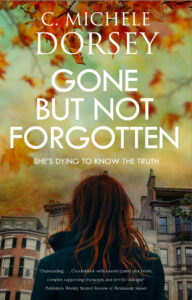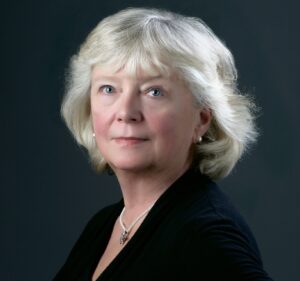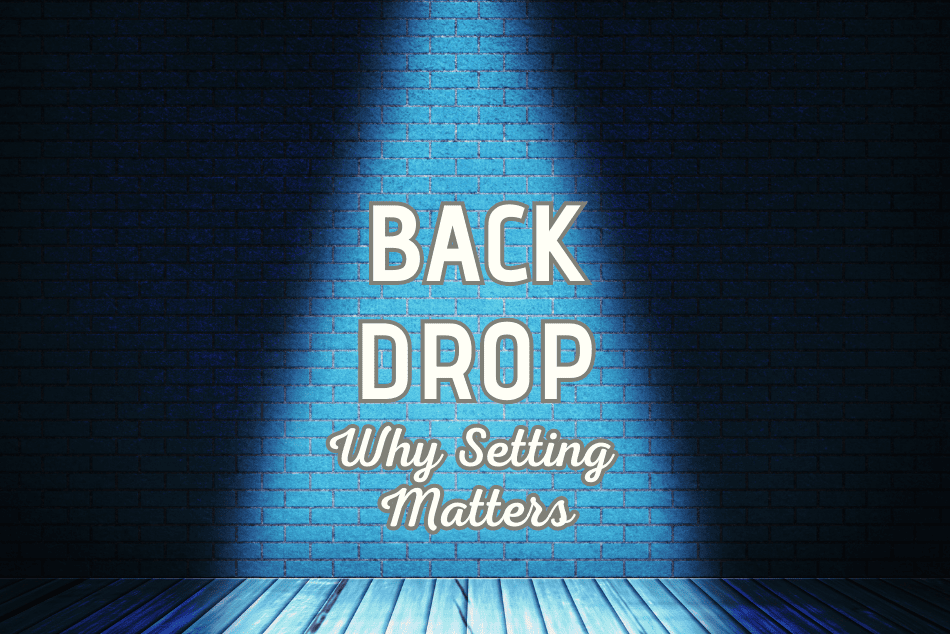The setting in a novel is its stage, the backdrop for every action the characters take or suffer.
Setting breathes life into a story. Think The Marsh King’s Daughter by Karen Dionne set in the majestic swamp of Michigan’s Upper Peninsula or Where the Crawdads Sing by Delia Owens set in the marshland of North Carolina. Both were blockbuster novels with strong female characters, but what distinguished them was that their stories played out on a stage designed to bring them alive. It’s no coincidence that both books became major movie productions.
Bringing passion to a setting helps to ignite the plot. When I wrote the Sabrina Salter series set in St. John in the U.S. Virgin Islands, each was in some ways a love letter to an island I adore. I explored the details of St. John with gusto in each book, and not just its natural beauty and tranquillity. I described the tension between the full-time population and the often-obnoxious tourists who provide their livelihood. I compared ostentatious villas with the overpriced primitive housing where island residents live. Tropical Depression was set hour by hour during Hurricane Irma, a five-plus category that nearly destroyed St. John.

Some writers invent the locations for their books, including those who write fantasy, which I consider an admirable and awesome challenge. Building a world from the ground up takes temerity.
For the rest of us, I have a few suggestions for writing setting with passion.
Write about a location you know or want to know intimately.
Readers can be tough about setting. Without fail, some reader will have been to the location you have chosen as your setting, or worse, lives there. You need to know the location well and be clear to readers if you are deviating from reality, which you can do in the foreword or acknowledgements of your book. But even a disclaimer may not satisfy readers. “I live in D.C. and there’s no Cleveland Square.”

In my latest book, Gone But Not Forgotten (Severn House July 2023), I chose Boston in autumn as the setting for the story of Olivia Rose Taylor. I injected the flavor of Boston by using local hospitals, schools, restaurants, and landmarks to set scenes. Although I was born in Boston, attended nursing school there, and later taught at a local law school for thirty years, I checked out every site online to confirm what I remembered and to see what had changed.
I chose to include a scene in the Jacob Wirth restaurant, which was established in 1886 and closed in 2018 after a fire, where Olivia meets with a retired federal agent. It was the perfect spot for the difficult conversation they would have and lent a historical Boston note. I’m glad I did. Jacob Wirth is now scheduled to reopen in September 2023. Settings are always changing.
Research what you don’t know.
I’ve been to Ireland several times and have fallen in love with the country my ancestors chose to leave. I wanted to set a novel there but my limited first-hand knowledge left me doubting whether I could do it authentically. I decided what I didn’t know first-hand, I would learn because I am passionate about Ireland.
Here’s where writing can be fun. Writers can research location in several ways. The ideal way is to go to the place where your book will be set. Elizabeth George goes to England before she writes each book in her Thomas Lynley series. Elisabeth Elo went to Siberia to research Finding Katarina M.
But if an actual trip to your setting isn’t feasible, a virtual visit can do the trick. Not only can you tour a location on YouTube, but you can also explore points of interest, read menus of restaurants where your characters will meet and eat, and view the hotels where they will stay, the homes where they will live. I can get lost looking at cottages in Ireland, casinos in Las Vegas, and even hospital tunnels under the streets of Boston.

My work in progress set along the Wild Atlantic Way, which I had explored for two weeks a few years ago, was a joy to research. I immersed myself into where my characters would stay on their fake honeymoon, what they would eat and drink, and what roads they would take along the long treacherous coast.
There’s more to it than geography.
Setting is more than describing where the story unfolds. You are filling the senses of your readers with details that will transport them to your characters. When Olivia falls on soggy leaves on a sidewalk in Boston during an autumn mist after nearly being hit by a car, you feel her bruised knees through her damp jeans and smell the mustiness of decaying leaves. You can feel the mist falling on you. You are in Boston in the fall.
The restaurants, courtrooms, emergency rooms where the story plays out can be considered sub-settings or mini locations. They not only bring you to Boston, but to the Jacob Wirth restaurant in Boston, where you are eating Wiener Schnitzel with a fried egg and warm apple strudel.
Think of setting as a page in a coloring book. Use crayons of all colors to fill in the spaces and location will jump off the page. And have fun doing it.

C. Michele Dorsey is the author of Oh Danny Girl and the Sabrina Salter series, including No Virgin Island, Permanent Sunset, Tropical Depression, and Salt Water Wounds. Her latest novel, Gone But Not Forgotten will be published by Severn House in July 2023. Michele is a lawyer, mediator, former adjunct law professor and nurse, who didn’t know she could be a writer when she grew up.
Now that she does, Michele writes constantly, whether on St John, outer Cape Cod, or anywhere within a mile of the ocean.





